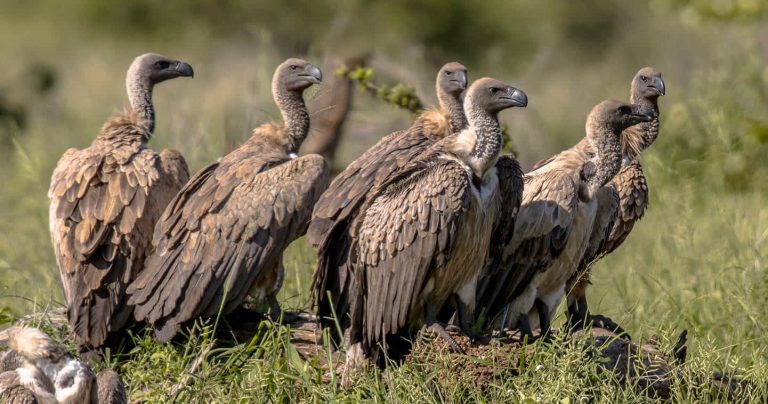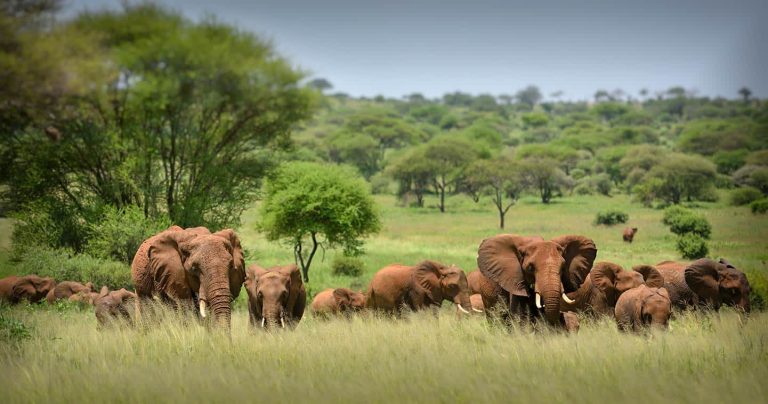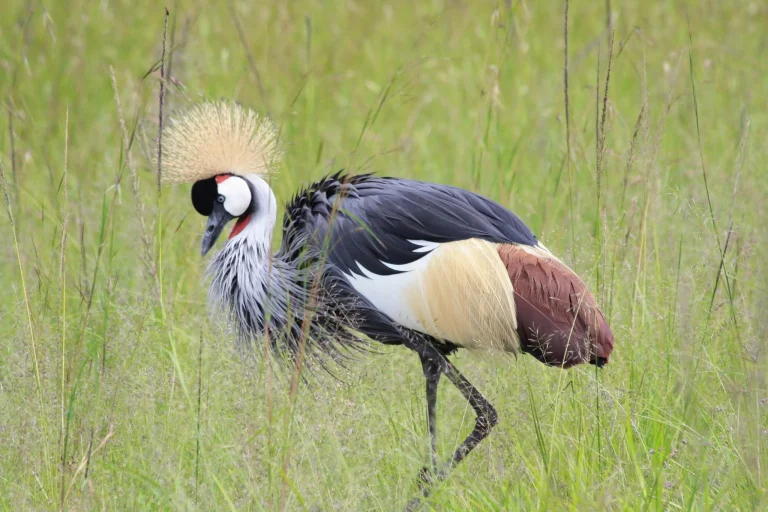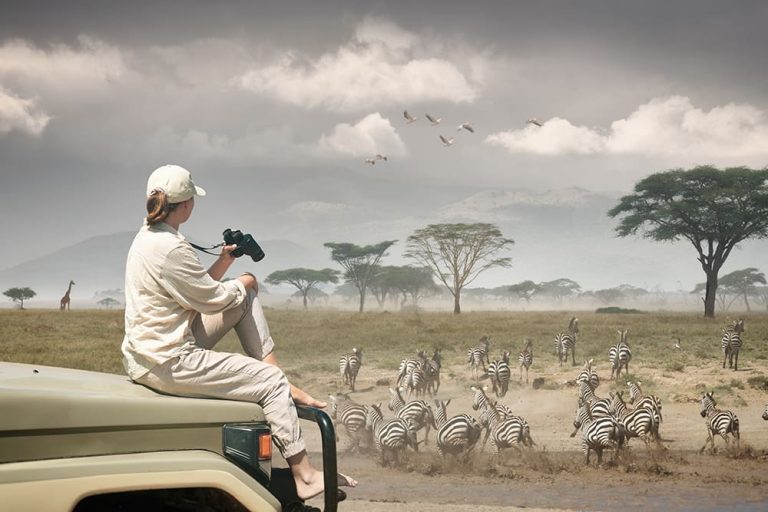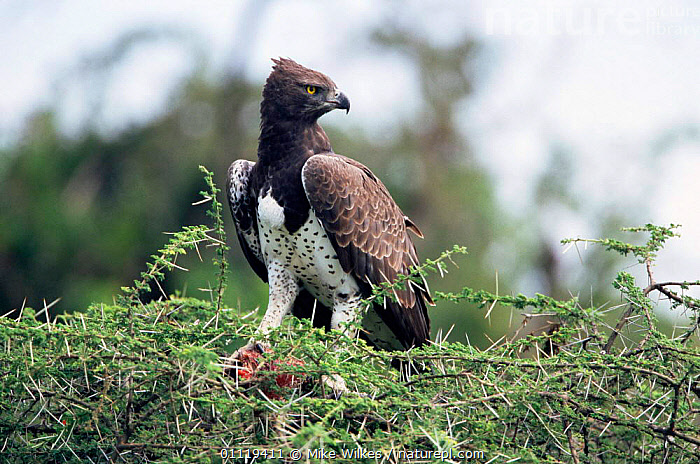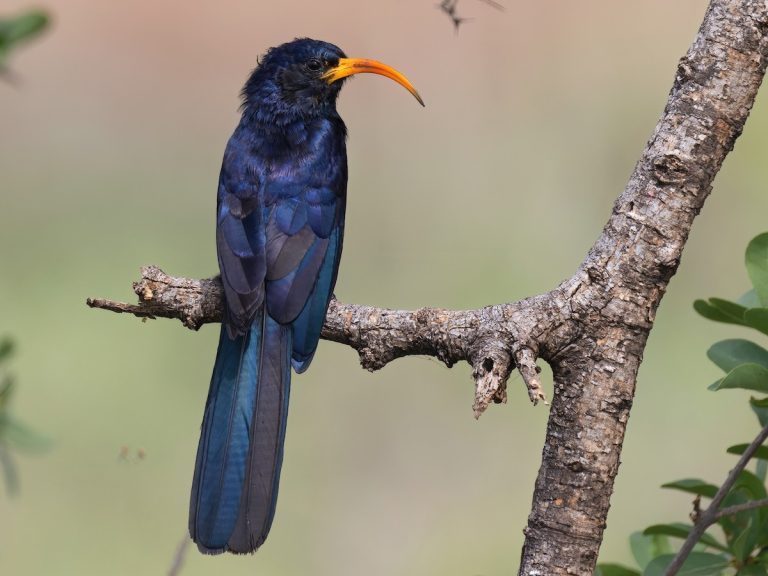Introduction: A Desert Survivor
The Serengeti, with its sweeping grasslands and semi-arid conditions, is home to one of nature’s most resilient birds—the Yellow-Throated Sandgrouse (Pterocles gutturalis). As the dry season sets in, bringing extreme heat and water scarcity, this remarkable bird employs a suite of specialized adaptations to survive in one of Africa’s most demanding environments. From unique water-collection methods to camouflage tactics, the Yellow-Throated Sandgrouse thrives where many others struggle.
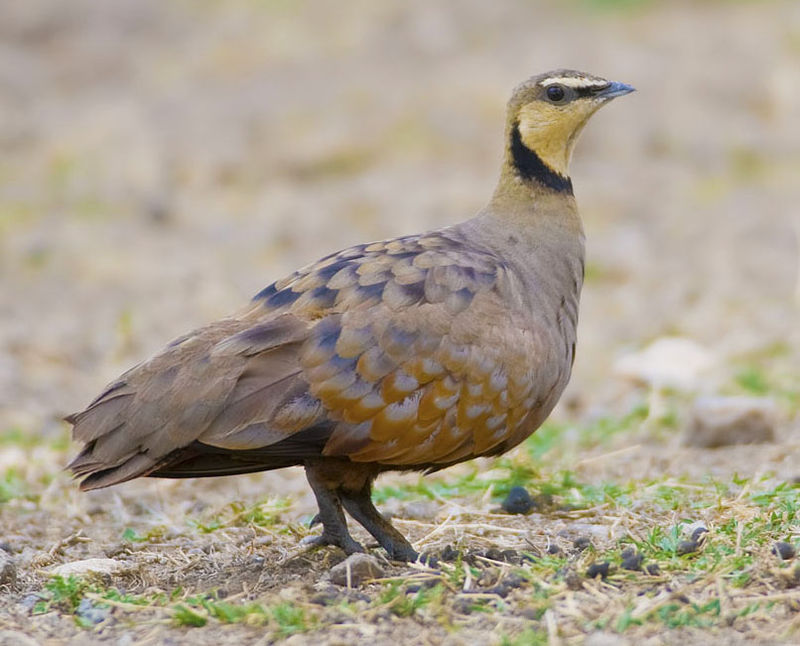
Physical Adaptations for Survival
1. Unique Feather Structure for Water Transport
One of the most fascinating adaptations of the Yellow-Throated Sandgrouse is its specialized breast feathers, which have a sponge-like structure that allows them to absorb and retain water. This adaptation is particularly beneficial for adults transporting water from distant sources to their chicks, ensuring survival even in water-scarce conditions.
2. Cryptic Coloration for Camouflage
The bird’s sandy-brown, yellow, and black plumage allows it to blend seamlessly with the dry Serengeti landscape. This natural camouflage helps protect it from predators such as eagles, hawks, and jackals.
3. Heat-Resistant Physiology
Unlike many birds that succumb to overheating, the Yellow-Throated Sandgrouse has physiological adaptations to withstand high temperatures, including:
- Panting: Helps dissipate excess heat.
- Reduced Activity: During peak daytime heat, the bird limits movement to conserve energy.
- Efficient Cooling Mechanisms: Blood flow regulation in extremities helps maintain body temperature balance.
Behavioral Adaptations in the Dry Season
1. Nocturnal and Crepuscular Activity
To avoid the sweltering midday heat, Yellow-Throated Sandgrouse are most active during dawn and dusk when temperatures are lower. This behavior helps them forage efficiently while conserving energy.
2. Long-Distance Flights for Water
During the dry season, these birds fly up to 50 kilometers daily in search of water sources. Males often undertake these journeys to soak their belly feathers in water and return to their nests to hydrate their chicks.
3. Dietary Shifts to Drought-Resistant Seeds
With vegetation drying up, the Yellow-Throated Sandgrouse adapts by consuming hard, drought-resistant seeds that retain moisture. This dietary shift ensures sustained energy intake even when food becomes scarce.
Predator Avoidance and Nesting Strategies
1. Ground Nesting with Minimal Disturbance
During the dry season, the species carefully selects nesting sites among tufts of dry grass or small depressions in the soil. These sites provide:
- Concealment from predators.
- Protection from harsh winds.
- Proximity to food sources.
2. Silent Defense Mechanisms
Unlike some bird species that rely on alarm calls, the Yellow-Throated Sandgrouse uses stillness as a defense mechanism, remaining motionless when a predator approaches. This behavior minimizes detection.
3. Cooperative Parental Care
Both parents share incubation duties, alternating between foraging and protecting the eggs. This strategy ensures maximum survival chances for their offspring, even in the challenging dry season.
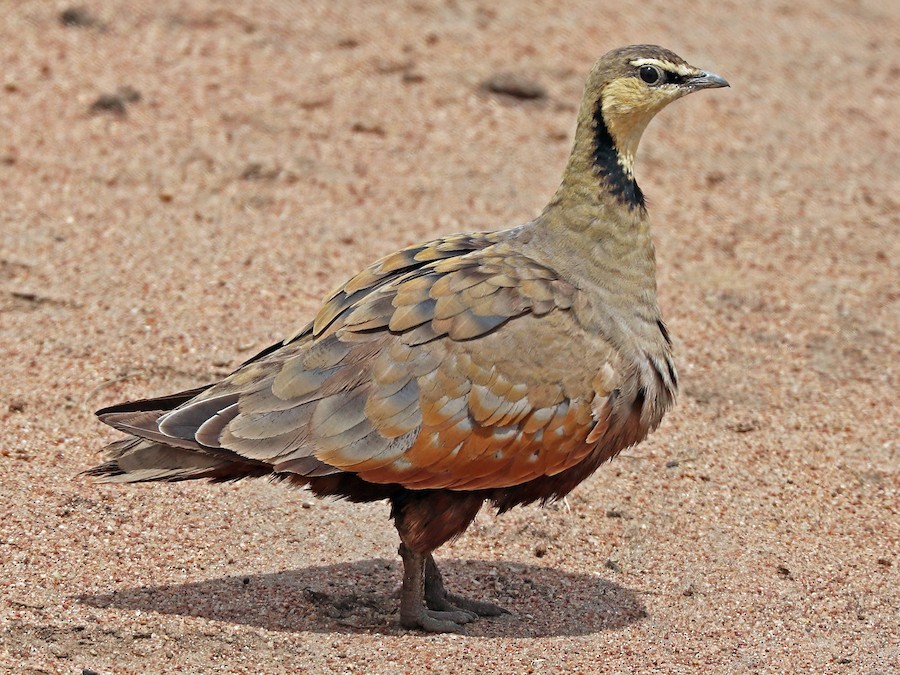
Ecological Role in the Serengeti
1. Seed Dispersal
By consuming various seeds and excreting them in different locations, the Yellow-Throated Sandgrouse plays a crucial role in plant regeneration within the Serengeti ecosystem.
2. Prey for Larger Predators
While adept at survival, the bird remains an essential part of the food chain, serving as prey for raptors and carnivorous mammals, maintaining ecological balance.
3. Indicator of Environmental Health
The presence and population trends of the Yellow-Throated Sandgrouse serve as indicators of ecosystem health, reflecting changes in climate and habitat conditions.
Conclusion: A Symbol of Resilience
The Yellow-Throated Sandgrouse is a master of adaptation, embodying resilience in the face of Serengeti’s extreme dry season. Through its unique feather adaptations, behavioral flexibility, and ecological contributions, this bird continues to thrive in one of Africa’s most challenging landscapes. For birdwatchers and conservationists alike, understanding and protecting such species is essential to maintaining the Serengeti’s delicate ecological balance.

